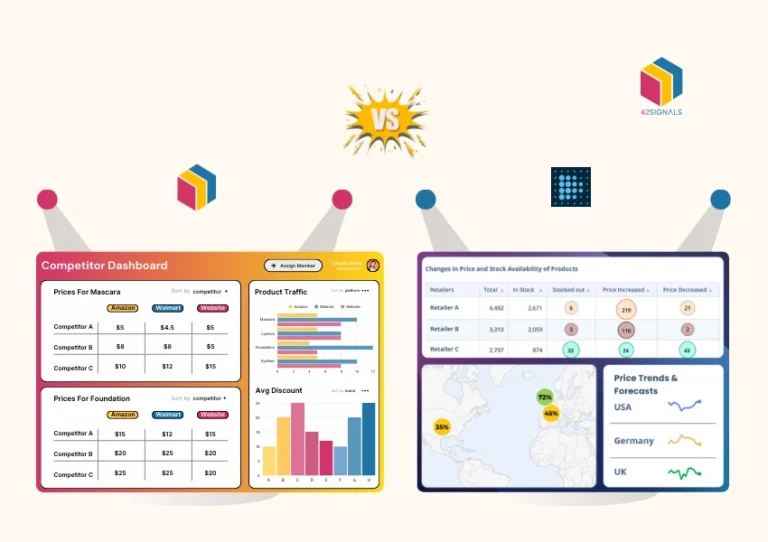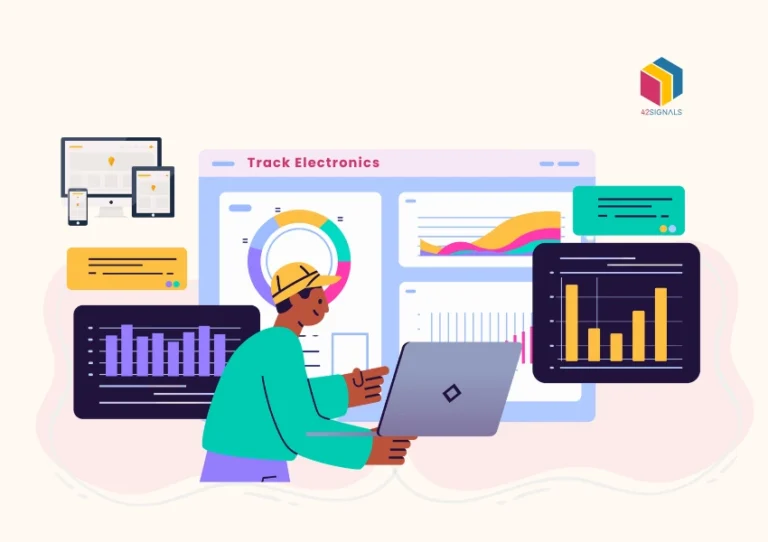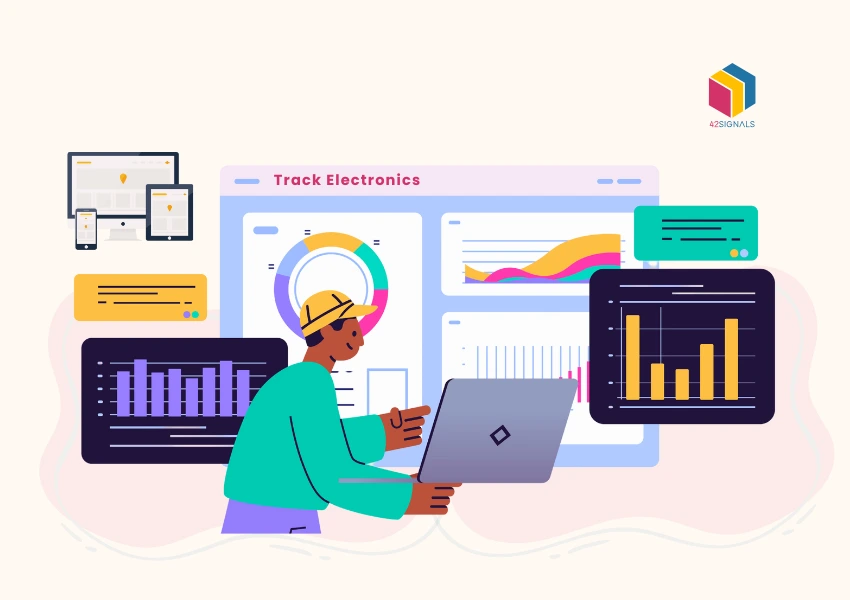Table of Contents
ToggleA frustrated customer leaves a scathing review on your Amazon product page: “The Bluetooth speaker stopped working after two weeks. Worst purchase ever!” Another buyer echoes the complaint. Then another. Unseen and unaddressed, these grievances snowball into a 30% drop in sales over three months, while competitors gain traction with improved versions of the same product. If left undealt, this can become a huge lost opportunity and that’s why customer feedback analysis is so important.

Image Source: Rival IQ
Reviews are how people online purchase products; they build trust. When a consumer is faced with a new brand or product they want to know what’s the feedback of other users so far. That has a huge sway on their decision-making process.
Let’s find out more.
What Is Customer Feedback Analysis?
Customer feedback analysis involves systematically collecting, processing, and interpreting reviews, surveys, and social media comments to uncover patterns, pain points, and opportunities. Advanced tools scrape data from platforms like Amazon, analyze sentiment using natural language processing (NLP), and translate raw emotions into quantifiable metrics.
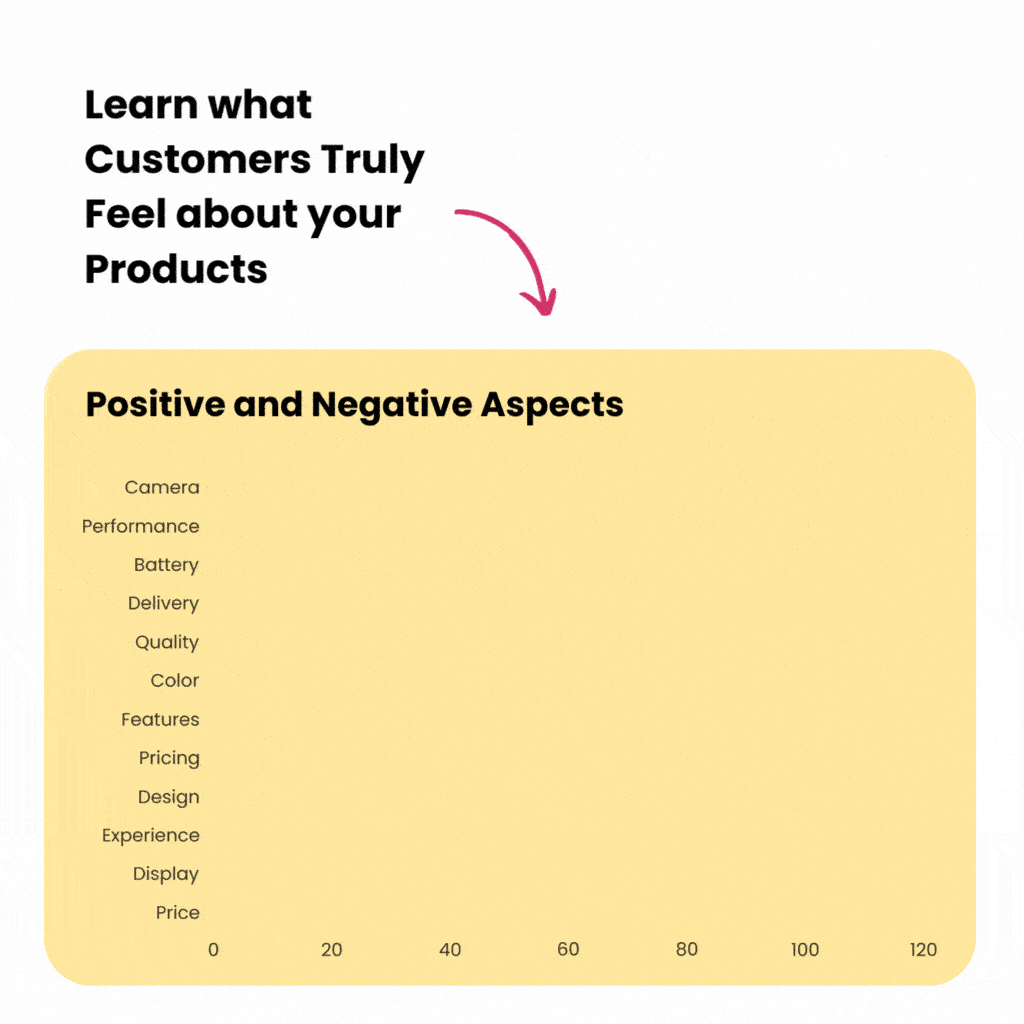
For instance, scraping Amazon data might reveal that 40% of negative reviews for your wireless earbuds cite “short battery life.” This insight directs R&D to prioritize longer-lasting models, directly addressing customer needs.
Why Is Customer Feedback Analysis Non-Negotiable for Growth?
1. Real-Time Insights Prevent Brand Erosion
Negative reviews spread faster than ever. A single viral complaint about a defective product can deter thousands of potential buyers. User feedback analysis tools monitor platforms 24/7, alerting teams to emerging issues.
Example: A skincare brand detected a spike in “skin irritation” mentions via voice of customer analytics. They traced it to a batch of expired products and issued recalls before sales dipped.
Key Insight: Pair feedback analysis with scraping customer reviews across multiple channels (Amazon, Walmart, social media) to identify trends invisible on single platforms.
2. Uncover Hidden Product Opportunities with Customer Feedback Analysis
Positive reviews often highlight unmet needs. A toy company noticed customers praising their STEM kits for “easy assembly.” They launched a premium line targeting parents seeking educational toys, boosting revenue by 18%.
Pro Tip: Use consumer sentiment analysis to categorize feedback into themes (quality, usability, delivery) and prioritize fixes.
3. Optimize Marketing with Customer Language
Reviews reveal how buyers describe your product. A coffee brand found customers calling their blend “smooth” and “less acidic.” They updated Amazon listings and ads with these terms, increasing click-through rates by 25%.
4. Enhance Customer Experience (CX)
Negative feedback often points to CX gaps. A hotel chain analyzed reviews and found that “slow check-in” was a recurring issue. Implementing mobile check-ins reduced complaints by 50%.
Ethical Review Scraping: Turning Amazon Data into Action
Scraping customer reviews is pivotal for large-scale analysis, but it requires ethical practices:
- Use Public Data Only: Avoid scraping personal information or private pages.
- Respect robots.txt: Adhere to website policies. Amazon, for example, allows scraping but blocks excessive requests.
- Leverage APIs and Trusted Tools: Amazon’s API or a tool like 42Signals provides structured review data without violating terms
Example: A home appliance brand used Amazon review scraping to identify that 60% of negative feedback cited “complicated setup.” They included a QR code linking to video tutorials in packaging, reducing setup-related complaints by 70%.
Step-by-Step Guide to Implementing Customer Feedback Analysis

Step 1: Collect Data with Advanced Tools
- Leverage 42Signals: Automate and streamline data collection using platforms like 42Signals, which aggregate customer reviews from Amazon, social media, and niche forums. Their tools eliminate manual scraping, offering features like:
- Cross-Platform Scraping: Pull data from Amazon, Walmart, Reddit, and Shopify in one dashboard.
- Sentiment Alerts: Receive instant notifications for spikes in negative feedback or emerging trends.
- Historical Analysis: Track sentiment shifts over time to identify long-term pain points.
- Supplement with Surveys: Use embedded post-purchase surveys to gather direct feedback.
- Scrape Public Forums: Ethically extract insights from platforms like Trustpilot or specialized forums (e.g., parenting blogs for baby products).
Step 2: Clean and Categorize Customer Feedback Analysis
- Filter Noise: Remove spam, duplicate reviews, or irrelevant comments. Tools like 42Signals auto-flag fake reviews using AI-driven authenticity checks.
- Tag by Theme: Use NLP tools to categorize feedback into topics (e.g., “packaging,” “customer service,” “product durability”).
Step 3: Analyze Sentiment at Scale
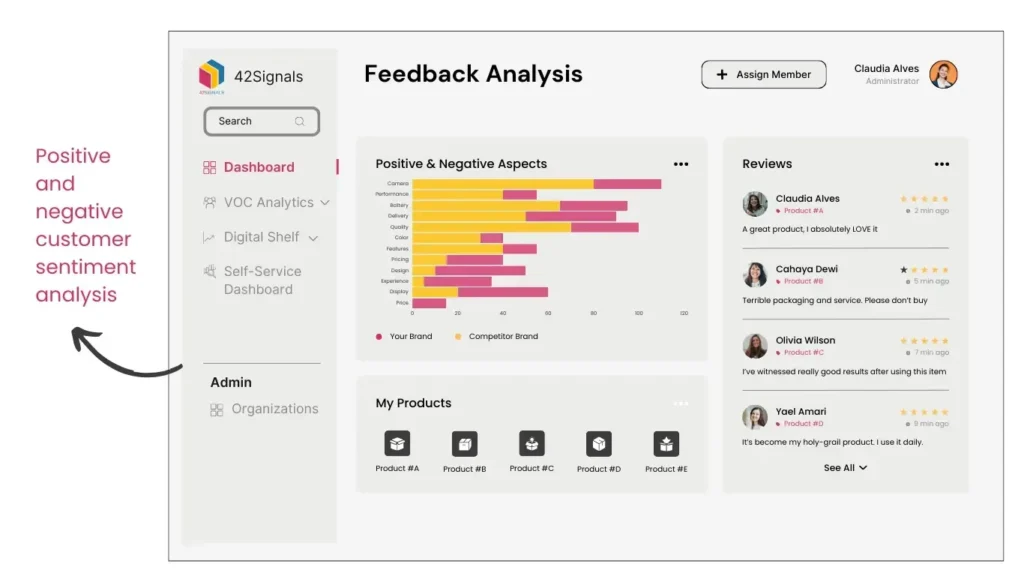
- Integrate 42Signals Analytics: Their dashboard quantifies consumer sentiment with heatmaps, keyword clouds, and trend graphs. For example, identify if “slow delivery” complaints correlate with specific regions or seasons.
- Cross-Reference Data: Compare feedback with sales data to prioritize high-impact issues (e.g., a 15% sales drop in products with “battery life” complaints).
Step 4: Act on Insights Strategically
- Route Findings: Automate workflows to send product flaws to R&D and CX gaps to support teams.
- A/B Test Solutions: Use 42Signals’ A/B testing module to trial responses (e.g., offering refunds vs. replacements for defective items).
Step 5: Monitor Impact and Iterate
- Track Real-Time Changes: 42Signals’ dashboards show how to review ratings and sentiment shift post-intervention.
- Adjust Campaigns: If negative reviews persist, refine strategies (e.g., enhance product tutorials for recurring usability issues).
Must-Have Tools for Data-Driven Customer Feedback Insights
- 42Signals: A powerhouse for automated review scraping, customer feedback analysis, and competitive benchmarking. Some of the features include –
- Dark Store Details: Gain a closer look at operational data like store IDs and geographic markers. These insights offer clarity about a quick commerce brand’s localized operations, making it easier for brands to align their resources effectively.
- Regional Pricing and Discounts: Understand pricing and promotional patterns at a more detailed level. This allows for intelligent competitive benchmarking, ensuring that your pricing strategies remain aligned with consumer expectations and market dynamics.
- Product Availability Insights: Stay on top of product availability trends for individual locations. This is especially critical for managing inventory efficiently, ensuring that high-demand items are never out of stock where they’re most needed.
- Competitor Tracking: Understand strategies and movements of competitors to stay agile in pricing, new launches, and product range.
- Consumer Sentiment: Learn what customers truly feel about your products – the negative and positive and use that data to drive meaningful improvements.
- ReviewMeta: Validates Amazon review authenticity.
- Qualtrics: Combines survey data with the voice of customer analytics.
- Amazon Brand Analytics: Reveals demographic trends tied to reviews.
Ethical Web Scraping: Compliance & Efficiency Simplified
42Signals simplifies compliance by:
- Using Official APIs: Avoid terms-of-service violations with direct Amazon API integration.
- Respecting Rate Limits: Prevent IP bans with throttled, ethical scraping.
- Anonymizing Data: Strip personal details to align with GDPR/CCPA.
Case Study: How 42Signals Transformed a Beauty Brand’s Strategy?
A skincare company used 42Signals to:
- Detect a 300% spike in “allergic reaction” reviews on Amazon.
- Trace the issue to a mislabeled ingredient batch.
- Issue recalls and launches a transparency campaign with ingredient breakdowns.
- Result: Negative sentiment dropped by 65% in 30 days, and sales recovered to pre-crisis levels.
By integrating 42Signals into your feedback analysis workflow, you turn raw data into a strategic asset, ensuring no insight—or customer—falls through the cracks.

Ready to Revolutionize Your Feedback Strategy?
Book a 42Signals Demo to automate insights, protect your brand, and unlock growth.
Frequently Asked Questions
What is a customer feedback analysis?
Customer feedback analysis is the process of collecting, examining, and drawing insights from customer opinions, suggestions, and complaints. This feedback may come through surveys, support tickets, emails, social media, or online reviews.
The goal is to understand what customers like, what frustrates them, and where there are opportunities to improve products, services, or the overall experience. When done well, this kind of analysis helps companies make informed decisions and build stronger relationships with their audience.
What is customer review analysis?
Customer review analysis focuses specifically on analyzing written reviews left by customers on platforms like Amazon, Google, Yelp, or a company’s own website.
Rather than just looking at star ratings, review analysis digs into:
- The language and tone used in reviews
- Keywords or phrases that frequently appear
- Sentiment (positive, neutral, or negative)
- Common themes or repeated issues
This type of analysis helps businesses understand how customers really feel — in their own words — and where they can improve.
How do you write a feedback analysis?
Writing a feedback analysis involves turning raw input into a structured summary of insights. Here’s a simple approach:
- Gather the data – Collect feedback from all relevant sources: surveys, chats, reviews, etc.
- Organize by themes – Group similar comments together (e.g., delivery issues, pricing concerns, product quality).
- Quantify where possible – Include how often certain issues come up or how many users shared similar feedback.
- Interpret the results – What trends or patterns are emerging? What seems to matter most to your customers?
- Summarize clearly – Write a short, focused report with bullet points, visuals, and recommendations.
Keep it concise, objective, and focused on actionable takeaways.
How do you analyze and interpret feedback?
To analyze and interpret feedback, go beyond just reading the comments. Look for patterns in what people are saying and how they’re saying it.
Steps to follow:
- Segment feedback by customer type, channel, or product area.
- Use tools like sentiment analysis software or word clouds to spot recurring themes.
- Context matters – A complaint during a peak season may have different implications than the same complaint during normal operations.
- Look for root causes, not just symptoms. For example, if people say the product is “hard to use,” is it a design issue or lack of instructions?
Interpretation means turning raw comments into a deeper understanding of what’s working and what needs improvement.

